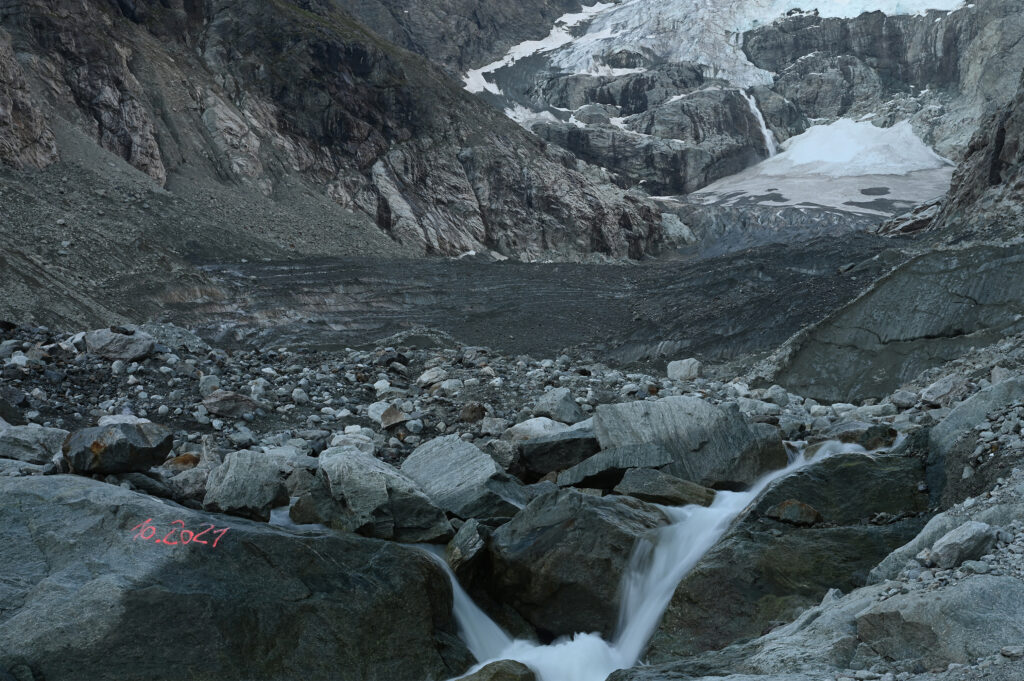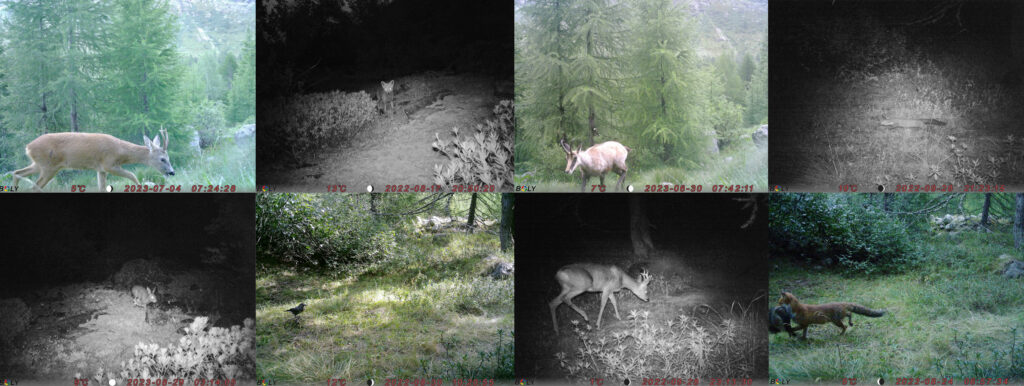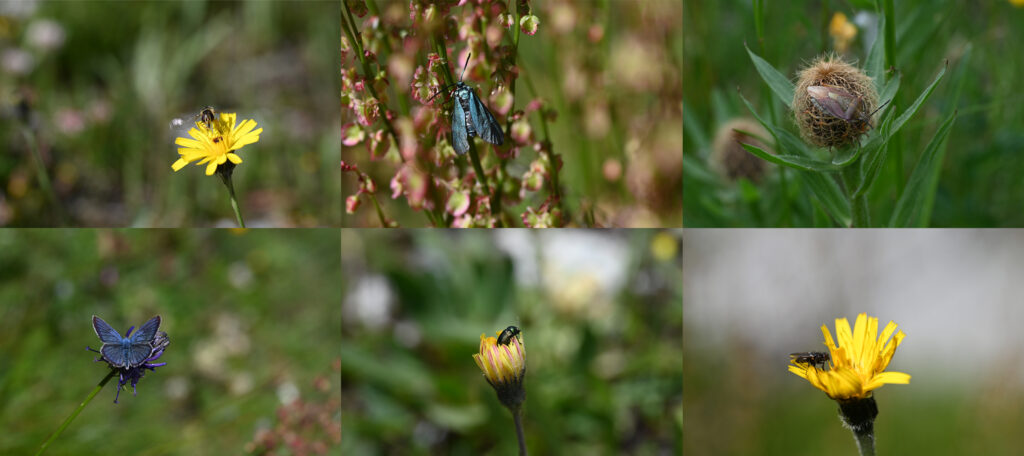Notes from the field, Ferpècle and Mont Miné Glacier, Valais, Switzerland, 2022-2023
2022
When I discovered the field on 12 July 2022, I was amazed by the proximity of the Mont Miné Glacier and by the beautiful alluvial zone of Ferpècle. One of our first activities was to hike to the glacier, to reach the safest and closest area possible. On the way up, I saw the stones marked with the years of the glacier’s retreat. I was very impressed to see that the melting of the ice was so closely linked to a human scale.

Steps towards disappearance
How to reconnect better to the human scale than by simply walking.
2002 – 2003: 55 steps
2003 – 2004: 26 steps
2004 – 2005: 40 steps
2005 – 2008: 223 steps
2008 – 2010: 177 steps
2010 – 2011: 48 steps
2011 – 2012: 95 steps
2012 – 2013: 55 steps
2013 – 2015: 122 steps
2015 – 2016: 29 steps
2016 – 2017: 70 steps
2017 – 2018: 38 steps
2018 – 2022: 182 steps How many steps do we have left?

By hand
When I followed the Biodiversity Change Group in the field in July 2022, I was able to witness and even participate in a lot of their sampling activities. I noticed that a lot of work is still done by hand. Sampling data by catching insects with a handmade aspirator or with a net, uprooting plants, filtering the liquid from the pitfalls through a sieve to collect the insects, transporting machines…

Camera Traps
As the framework of my fieldtrip was through an art-science exchange, Gianalberto and I wanted to share our respective practices, artistic from my side, and scientific from his side, but we also wanted to do something in common. We were both curious to know more about what animals might be in the field, and then the idea of installing camera traps popped up. Part of the fieldtrips in both 2022 and 2023 was to install them and to collect the images. The camera traps were very interesting devices, because they allowed us to see animals that we wouldn’t have been able to see otherwise.
Melting feelings
Melting feelings
On the 27 June 2023 I was back in the field. After an initial feeling of joy and happiness to see again this beautiful landscape and to be back in the field with Gianalberto and the Biodiversity Change Group, I was struck by how much the glacier had changed since my last visit. In less than a year it was possible to see with bare eyes where some parts of the glacier were missing. I suddenly felt very sad, as if experiencing loss…
Seeing the melting of the glacier with my own eyes made it so real, so tangible. I realised the power of witnessing it first-hand, with the senses as opposed to reading about it and knowing about it rationally.
I shared my impressions with the group, and they told me that the sense of loss was even stronger for them, as scientists are confronted with this regularly in their work. It doesn’t fade away, on the contrary, the sense of urgency increases.
Artistic sampling
Having had time to collect and digest impressions, ideas, facts, and methods from the scientific approaches, I returned to the field in 2023 with the aim of sampling images for my artistic practice. Protocols are used in both scientific and artistic practices and, inspired by the protocols of the Biodiversity Change Group, I wanted to take images using similar approaches.
I decided to sample images using the same plots as the ones used by the scientists, as it also made sense for me to work with the visual aspects of the landscape, the richness (or poverty) of the biodiversity was indeed quite visible. My protocol was to collect 1. overviews, images from the landscape from far, 2. closer views, but still general images of the landscape, 3. macro images of plants, insects and of plant-pollinator interactions, 4. camera trap images of animals living in the same areas. This protocol allowed me to have a collection of many living beings of different kingdoms and of various sizes. Then I selected images for each area. The final stage is to assemble them into a video work. For this, a new protocol is needed, using layers and playing with scales.

Macro Photo
My fieldtrip in 2023 was also the first time I took macro photographs. With Ngan Bao Tu, we share a practice of photography, and we went on macro photography hikes together.
Doing macro photography helped me realise that from a distant, overlooking position, which one might have when photographing the landscape, macro photography can only be done by being in the landscape, lying on the ground, with the insects interacting with you. You can’t be distant from the environment; you are in it. I could compare this approach to photography to that of scientists, who are also interconnected with the environment when they are on the field: they lie on the ground, they uproot plants, they are bitten by the mosquitoes…
Special thanks to Dr Gianalberto Losapio, my tandem partner, to Nora Khleidj, Ngan Bao Tu and to the Biodiversity Change Group!
My gratitude to Pro Helvetia and the Swiss Polar Institute, without their support through the PolARTS initiative this experience wouldn’t have been possible.
Project: Intertwined Destinies, Glaciers and their companion species, Maëlle Cornut & Gianalberto Losapio
Arts researcher and visual artist, Maëlle Cornut is a beneficiary of the PolARTS funding scheme, a joint initiative of the Swiss Arts Council Pro Helvetia and the Swiss Polar Institute.